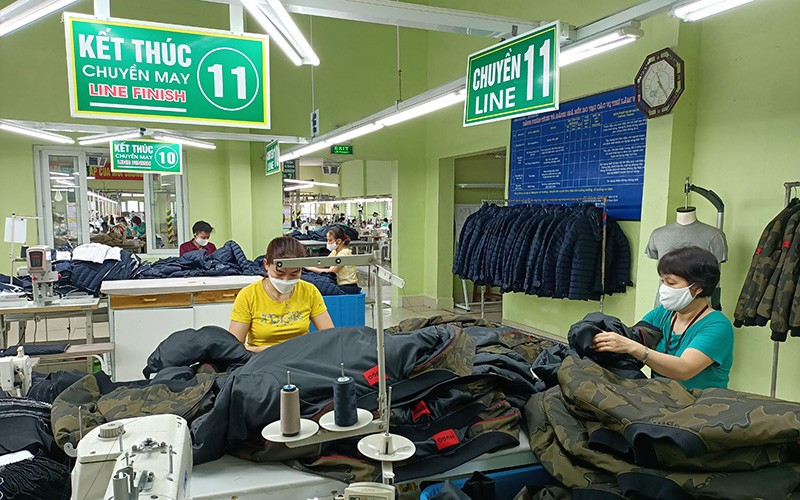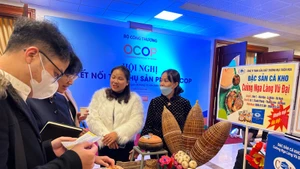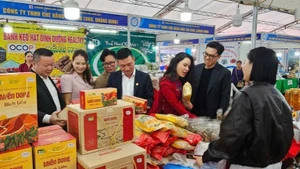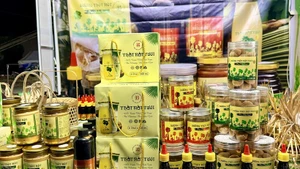To maintain operations, businesses are actively expanding the market and seeking orders to ensure jobs for workers.
Statistics from the Vietnam Textile and Apparel Association (Vitas) show that the total export turnover of Vietnam's textiles and garments in the first three months of 2023 reached more than 8.7 billion USD, down 18.63% from the same period last year.
Unprecedented difficulties
Chairman of the Ho Chi Minh City Textile, Embroidery and Knitting Association, Pham Xuan Hong, said that businesses are currently facing many difficulties when the number of orders decreased by 30-40% from the same period. The reason is that the world economic situation has not improved much; In the domestic market, purchasing power is weak, and underemployment has led to tight spending.
It is forecasted that the market will not show any signs of recovery in the coming time, so businesses will continue to face many challenges. Accordingly, neither the export market nor the domestic market are positive, so the textile and garment industry must make great efforts to maintain jobs for workers.
General Director of the Vietnam National Textile and Garment Group (Vinatex) Cao Huu Hieu said that the impact of the Russia-Ukraine conflict, the consequences the COVID-19 pandemic, the decline in global economic growth, and high inflation in some countries, along with high inventory, has caused partners and customers to limit bulk orders, or even stop receiving goods altogether. This has had a negative impact on production and business activities of enterprises.
Although in 2022, Vietnam's textile and garment industry achieved an export turnover of more than 44 billion USD, an increase of 10% compared to 2021, but right from the third quarter and the fourth quarter of 2022, there have been negative signals predicting many difficulties for textile and garment enterprises this year.
Responding to unstable market
In the coming months, the forecast is still not very positive for the world economy or the textile industry in particular. The current global economic recession and tight monetary policy have reduced demand in major importing countries of Vietnam's textiles and garments. At the same time, the reopening of China will be a big challenge as domestic enterprises will have to compete more and more fiercely with foreign businesses, especially as China is currently Vietnam's main competitor in the US market.
However, when China reopens its economy, it will also be an opportunity for businesses to boost exports to this market, contributing to reducing the input costs of garment enterprises.
However, in order to maintain production in the current difficult period, enterprises must actively implement solutions to adjust production and business plans and strategies to adapt to the market, step up the search for partners and customers, and expand the market, thereby ensuring jobs for employees.
In addition, businesses need to promote training, improve labour skills, be ready to sign seasonal orders, ensure fast delivery time to meet market demand.
According to Cao Huu Hieu, the yarn industry did not recover until the end of the second quarter of 2023, the market demand is likely to show signs of warming but is still very low. The world's yarn inventories are still high and cotton prices have dropped so low that yarn prices are unlikely to improve in the short term.
For the garment industry, the shortage of orders, small orders, small quantities, and low prices will last until the end of the third quarter. It is expected that garment orders will decrease by about 25-30% over the same period of last year.
Therefore, enterprises must optimise production activities, focusing on improving productivity and product quality. In addition, businesses need to closely follow the market and customers to have flexible and timely policies to maintain production and export of goods.
According to Vitas Chairman Vu Duc Giang, businesses need to make good use of opportunities and advantages from new-generation free trade agreements in which Vietnam is participating, thereby promoting research and expanding the export market. At the same time, they must build solutions for FOB (purchase of raw materials, semi-finished products) and ODM (designing, complete exclusive products for brands according to pre-order) forms of production in order to improve value and branding.
Faced with current difficulties, along with changing world consumption trends, orders are not only required to have high quality but must also be completed quickly. As such, enterprises must promptly update to modern equipment and machinery to meet the market needs as well as expand and catch up with the trend of greening the textile industry.
















